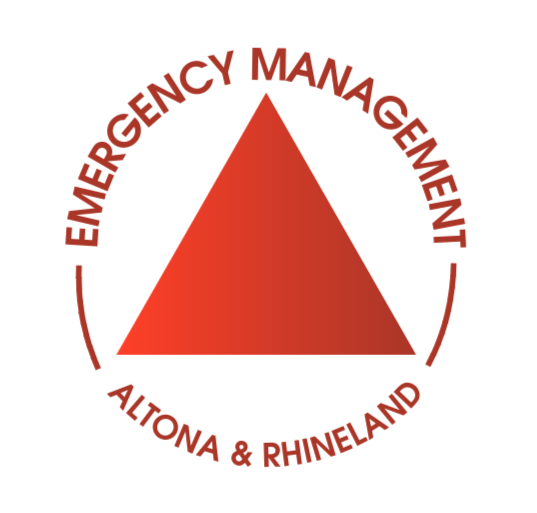
Tornados: Before, During, and After
In Canada, Tornado season is from April to September but can occur at any time of the year. Winds within a tornado can reach speeds of up to 500 km/h. Regardless of size, tornadoes have the ability to uproot trees, flip cars and damage homes. The best way to protect yourself and your family in case of a tornado is to follow these steps:
- Pay attention to weather watches and warnings.
- Move your family to a safe location on the lowest level of a building. Stay away from windows, outside walls and doors.
Before
- Know your tornado risk by contacting your local authorities. Know how warnings are given for tornadoes and ensure your family is familiar with the alert.
- Visit Environment Canada for up to date information on tornado conditions, storm maps and weather warnings.
- Know the difference between a tornado warning and a tornado watch:
- A tornado warning means a tornado is already occurring or will occur soon in your area. Evacuate if advised to do so.
- A tornado watch means a tornado is possible in your area. Stay alert for more information.
- Pay attention to weather warnings.
- Pick a safe place in your home for household members to gather during a tornado, preferably a basement. Make sure it is away from external doors, windows and walls.
- If you are in a highrise, pick a place in a hallway in the centre of the building. Talk to your building superintendent or manager and know your building emergency plan.
- Have practice drills with your family, so you know what to do and are prepared.
- Make a personalized preparedness kit. Families should be prepared to be self-sustaining for at least three days.
- Kits should include practical items such as drinking water, food, cash, and a portable radio. However, they should also include items that are unique to your own families’ needs. This could include baby items, medical prescriptions, pet food, etc.
- If you have already dipped into your emergency kit and food supply while staying at home, consider safely getting the supplies to replenish it following your local public health authorities’ guidelines for leaving your residence.
During
- If a tornado watch or warning has been issued, head to a safe location, like a basement or lower level of the building. Stay away from external doors, windows and walls.
- Continue to listen to local news and weather reports for updates: Tune into CFAM 950, check local news outlets such as Pembina Valley Online, monitor Altona weather alerts from Environment Canada, or sign up for Altona Connect (at the bottom of this webpage
Watch for danger signs:
- Dark, often greenish or orange-grey skies.
- Large hail.
- Large, dark, low-lying, rotating or funnel-shaped clouds.
- Roaring noise – similar to the sound of a freight train.
- Wait for the all clear before leaving your safe location.
- Lie flat in a ditch or a low-lying area if you are outside and there is no shelter nearby.
- Get out immediately and head for safety if you are in a car or mobile home. It is unsafe to stay in your vehicle as it could be picked up, blown over or roll over you.
After
- Listen to the radio for further information and instructions.
- If you are away from home, only return home when it is safe to do so.
- Check on vulnerable family members, friends and neighbours who may require assistance.
- Stay away from damaged areas and fallen power lines.
- If you suspect your home is unsafe, do not enter. Rely on the professionals to clear your home for re-entry, if you are unsure.
- Once you return home, take the opportunity to review your family emergency plan and restock your personalized emergency kit.
- Wear long pants, a long-sleeved shirt and sturdy shoes when examining your home for damage.
- Take pictures of damage, both of the building and its contents, for insurance claims.
- Check with local authorities on how to properly dispose of damaged items from your home.
Information sourced from Canadian Red Cross www.redcross.ca/how-we-help/emergencies-and-disasters-in-canada
How Do We Prepare for Emergencies?
Altona & Rhineland Municipal Emergency Coordinator: Perry Batchelor Altona & Rhineland Assistant Municipal Emergency Coordinator: Barry Friesen
The roles of the Municipal Emergency Coordinator:
- With the approval of Council, annually submit the Municipal Emergency Plan to the Provincial Government
- Establish an annual budget
- Quarterly reports to Council
- Quarterly meetings with the Local Emergency Response Control Group (LERCG)
- Liaise with local police/fire and the Provincial Emergency Measures Organization
- Recruit and train volunteers
- Public awareness
It is important to remember that during an emergency the first 72 hours are yours to be prepared for. Visit the Get Prepared website to learn more about creating a 72 hour emergency kit.
Sign up today for Altona’s Alert App, Connect, which allows us to communicate with you directly via email, text and landline in the event of an emergency. You'll find a link at the bottom of this page to register.
Remember, the first 72 is on you!!
Perry Batchelor
MEC
Town of Altona
204-324-4464
mec@altona.ca